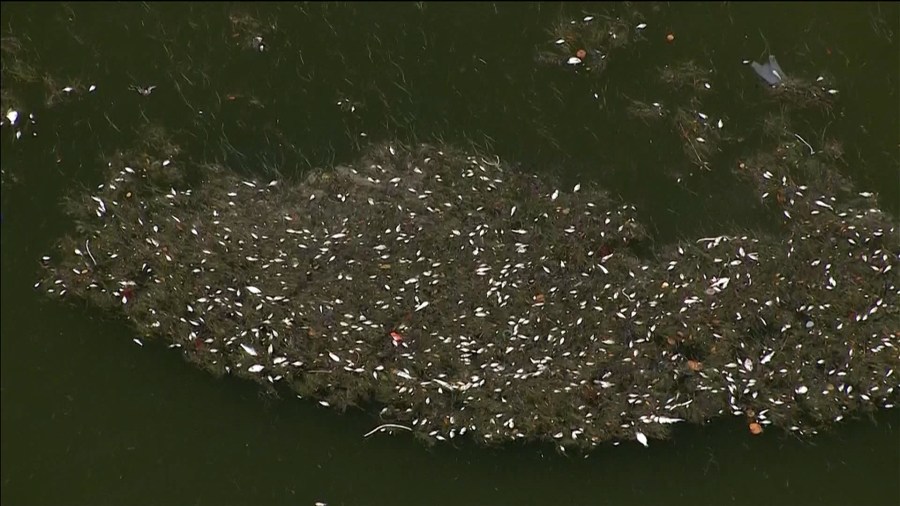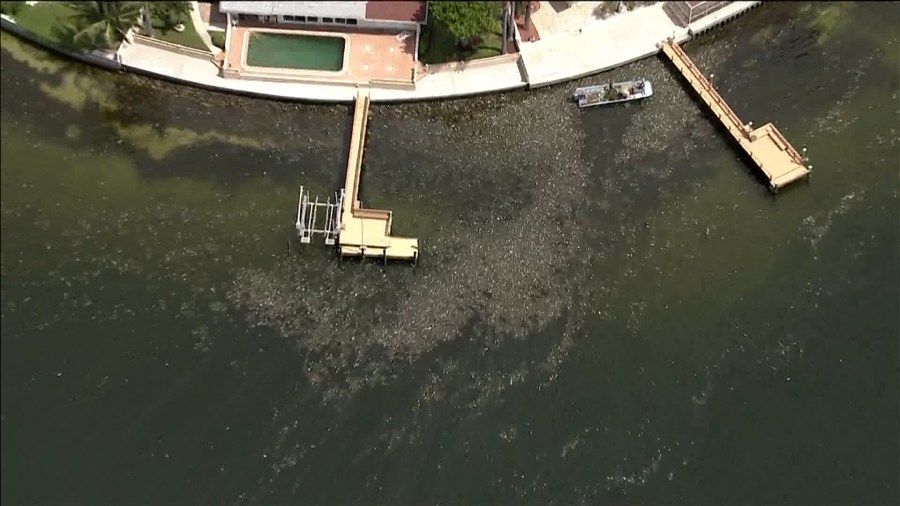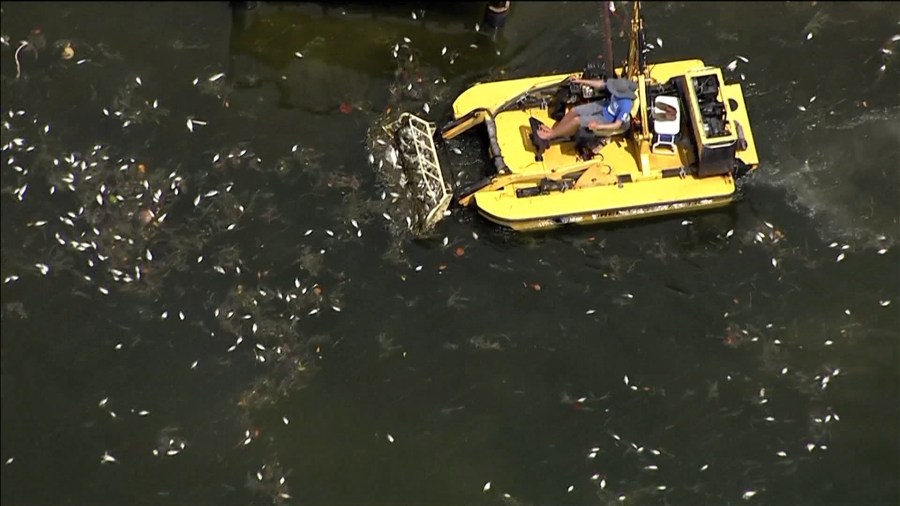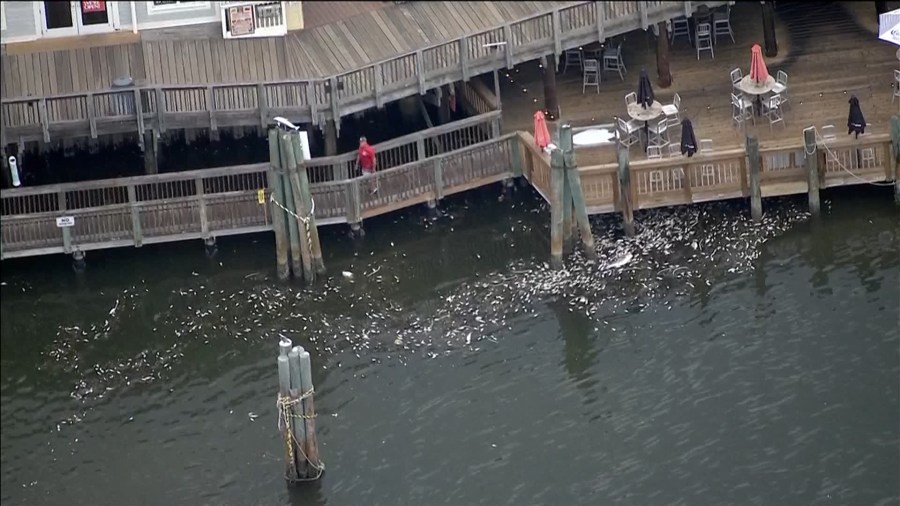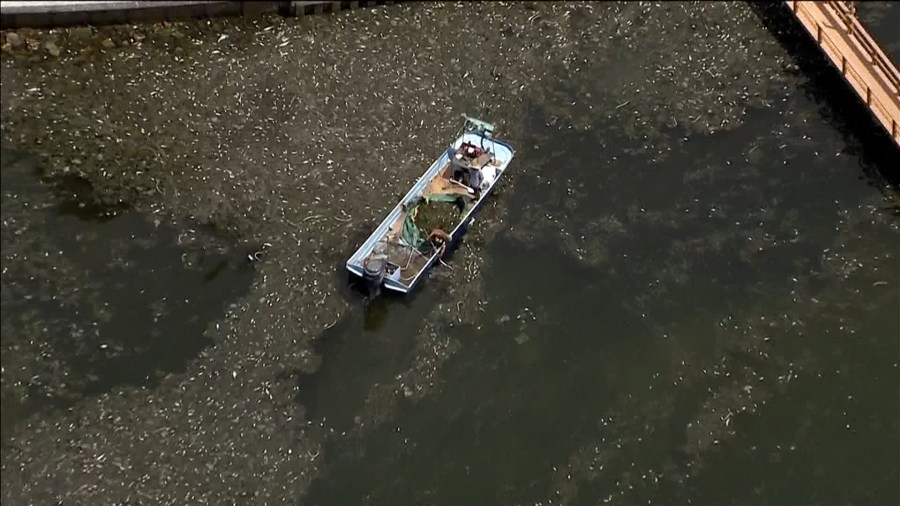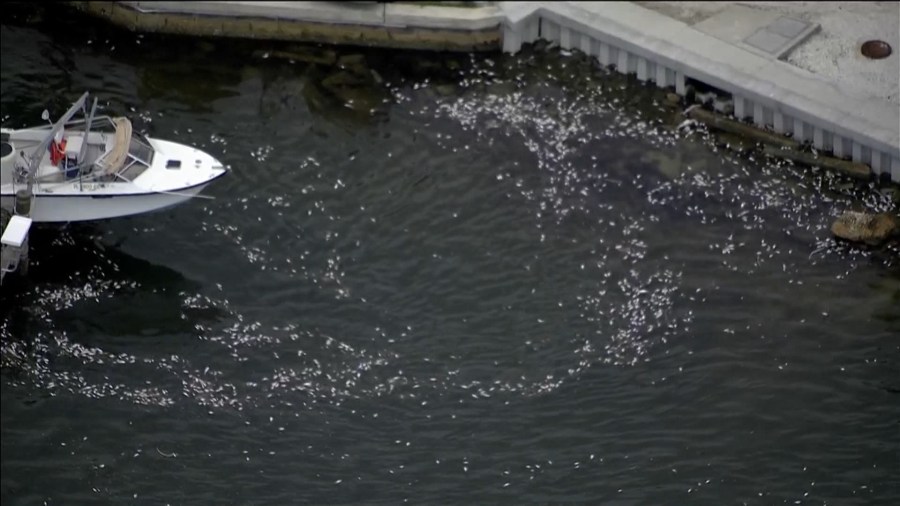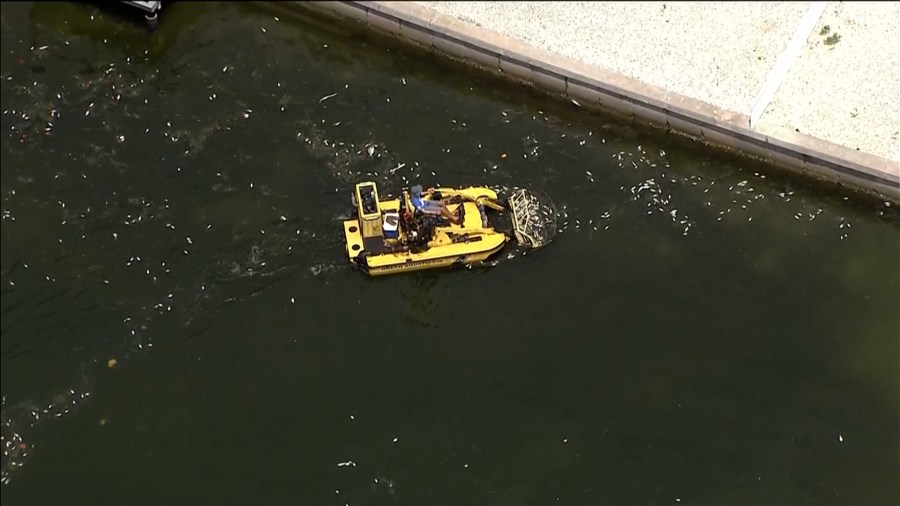TAMPA, Fla. (WFLA) — Red tide is back along Florida’s Gulf Coast, according to the Florida Fish and Wildlife Conservation Commission – and it’s back with a vengeance. With memories from a severe bloom several years ago still lingering, paired with news concerns over a wastewater breach at Piney Point in Manatee County earlier this year, people living along the coast are concerned.
If you’re new to Florida, or don’t remember the 2018 bloom, here’s what to know about red tide:
What is red tide?
The FWC describes red tide – also known as a harmful algal bloom – as a higher-than-normal concentration of microscopic algae. A bloom happens when there are large concentrations of cells, which can discolor water – making it reddish or brown.
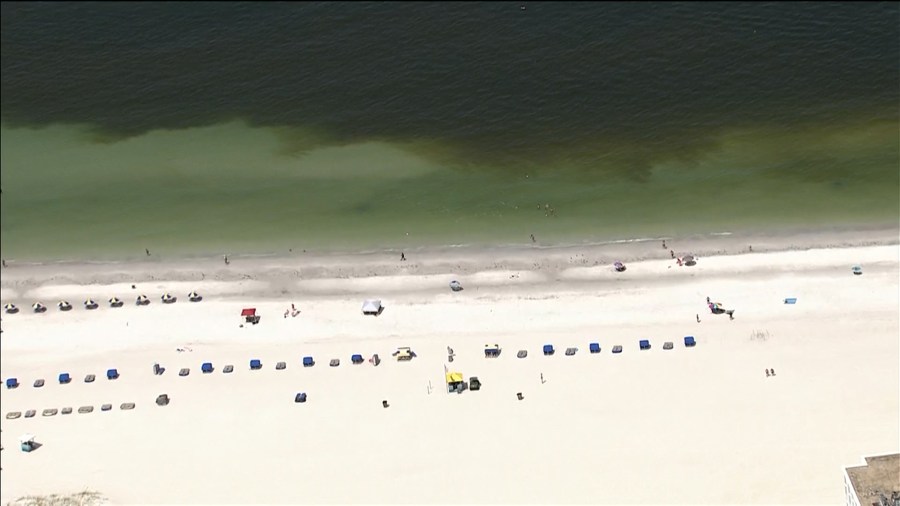
Discolored water spotted at St. Pete Beach on July 19 as red tide ravages Tampa Bay. (WFLA/Eagle 8 photo) 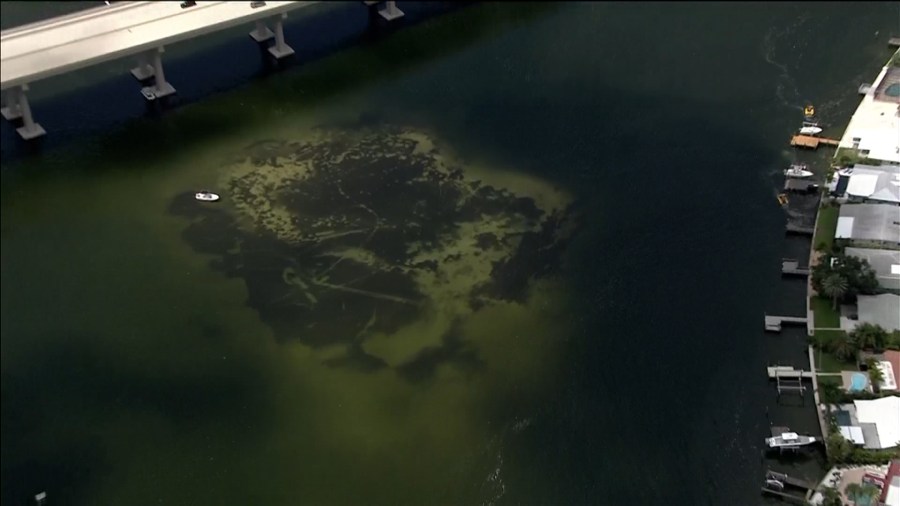
Discolored water in Pinellas County from red tide on July 19 (WFLA/Eagle 8 photo) 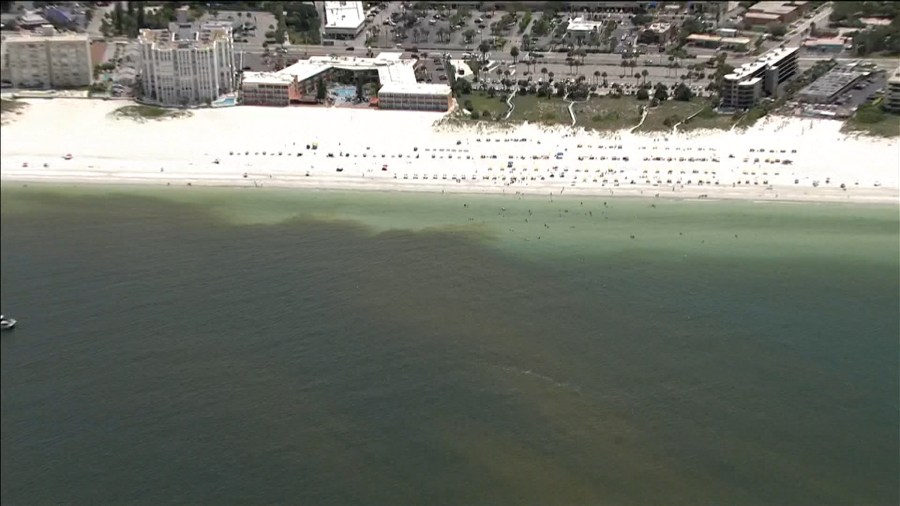
Discolored water on Pinellas County beaches from red tide on July 19 (WFLA/Eagle 8 photo) 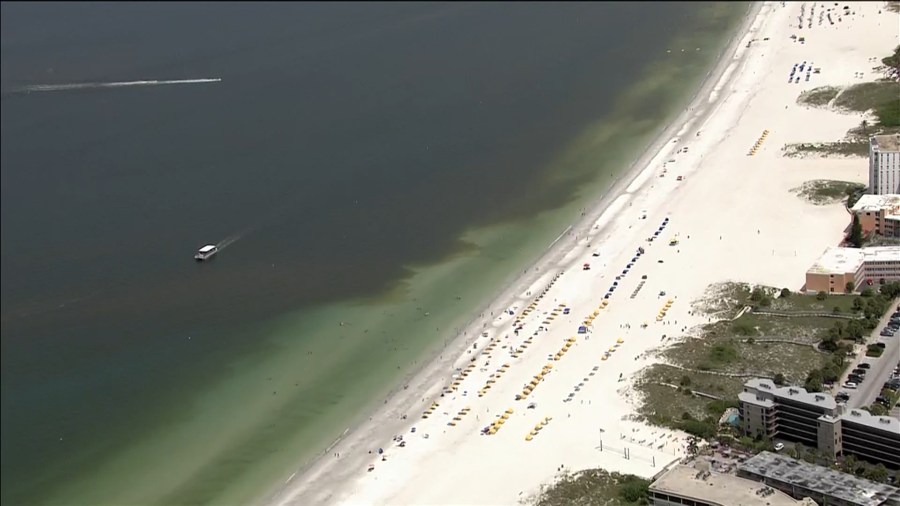
Discolored water on Pinellas County beaches from red tide on July 19 (WFLA/Eagle 8 photo)
The species that causes most red tides in Florida and the Gulf of Mexico is Karenia brevis, or K. brevis.
How often do red tides occur and how long do they last?
Red tides occur naturally in Florida. According to the FWC, “K. brevis is found year-round at background concentrations of 1,000 cells per liter or less.” Blooms happen in the Gulf of Mexico almost every year and usually happen in the late summer or early fall.
However, according to Mote Marine, human-contributed nutrients and nutrient pollution can feed the growth of red tide, making them more severe.
“Yes, the scientific data available so far suggest that it is possible for nutrients flowing from land to sea — including natural AND human-contributed nutrients carried by storm water runoff and the input of rivers — to serve as additional ‘food’ for growth of Karenia brevis red tide blooms that have moved to shore,” Mote says on its website. “
The FWC says most blooms last between three and five months, but some can persist for longer than a year. Mote adds on its site that the duration of a bloom depends on “physical, chemical, biological and ecological conditions that influence its growth and persistence, including sunlight, nutrients and salinity, as well as the speed and direction of wind and water currents.”
What does red tide do to marine life?
K. brevis produces brevetoxins that are capable of killing fish and other marine life, as well as birds. Fish kills can be a noticeable impact of a bloom and are tracked by the FWC.
“Red tides can also lead to die-offs of invertebrates, including shrimp, sponges, sea urchins, crabs and certain shellfish,” the FWC says on its website. “In most cases, it is unclear whether invertebrate die-offs occur because of exposure to toxins or the low-oxygen conditions resulting from blooms.”
The FWC explains that mass die-offs of birds are also common during a red tide bloom because the birds eat contaminated fish and crustaceans.
Dolphins and manatees can also be impacted by red tide.
Can red tide harm humans?
The brevetoxins that are produced by red tide can cause respiratory or eye irritation. According to the FWC, that’s caused by toxins becoming airborne when wave action breaks cells open. The FWC warns that red tide can cause “serious illness” for people who already suffer from severe or chronic respiratory conditions like emphysema or asthma.
A study is underway at the Roskamp Institute in Sarasota to examine whether or not red tide has any kind of long-term impacts on humans.
Can I swim in water impacted by red tide?
According to the FWC, most people will be fine swimming. However, red tide can cause fish kills and you should not swim near dead fish because they can be associated with harmful bacteria, experts say.
While most people should be OK swimming during a bloom, the FWC does say some can suffer skin irritation, burning eyes or respiratory irritation.
“Use common sense,” the FWC advises. “If you are particularly susceptible to irritation from plant products, avoid an area with a red tide bloom. If you experience irritation, get out of the water and thoroughly wash off.”
Can I eat seafood during a red tide bloom?
Humans can suffer Neurotoxic Shellfish Poisoning if they eat shellfish – like clams, oysters or mussels – that are contaminated with brevetoxins, which do not have a taste, smell or color and cannot be destroyed by cooking. That’s why shellfish harvesting from regulated areas is banned during red tide blooms.
“Fish are safe to eat as long as they are caught alive and only the muscle is eaten,” the FWC says on its website. “The muscle of crustaceans, including crab, shrimp, and lobster, is not affected by red tide toxins and can be eaten.”
The FWC adds that store-bought shellfish, as well as shellfish served at restaurants, are safe to eat because they’re monitored for safety by the government and are usually not harvested locally. If they are harvested locally, the FWC says shellfish are tested for red tide toxins before being sold.
Local finfish are also safe to eat during a red tide bloom, as long as they’re filleted, the FWC says.
“Although toxins may accumulate in the guts of fish, these areas are disposed of when the fish are filleted,” the FWC site explains. “However, it is never a good idea to eat dead or distressed animals, especially in a red tide area, because the reason for the animal’s strange behavior or death cannot be absolutely known.”
How do I know if a beach is impacted by red tide?
The FWC tracks red tide year-round and releases water samples regularly that are made public online. You can find the most recent eight days of sampling on an interactive map on the commission’s website. A red tide status update is released on the FWC website every Wednesday and Friday.
Mote Marine Laboratory also monitors beach conditions and has an interactive map set up online that you can check before heading out.
